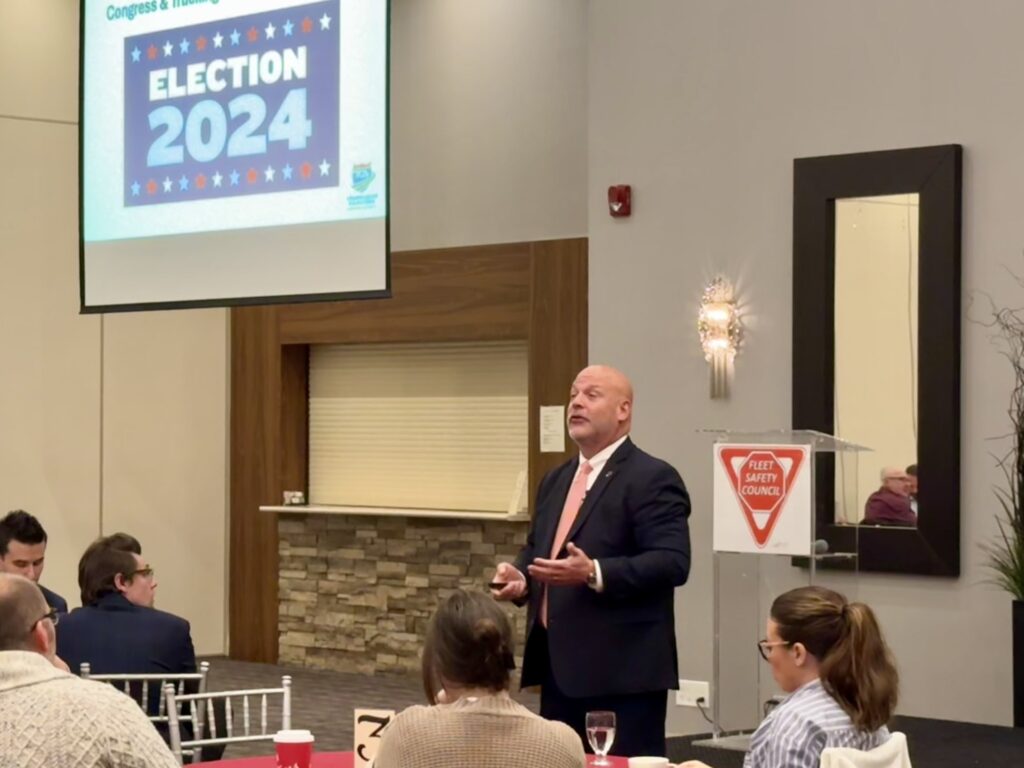As the U.S. presidential election approaches, stakeholders in the trucking industry are preparing for possible regulatory shifts that could profoundly impact the sector, according to Dave Heller, senior vice-president of safety and government affairs at the Truckload Carriers Association (TCA).
At the Fleet Safety Council conference in Brampton, Ontario, Heller expressed concerns regarding the timeline for adopting battery-electric vehicles (BEVs), ongoing delays related to speed limiter regulations, and unresolved matters concerning safety fitness determinations and minimum liability insurance—all of which may be influenced by the election results.
Impending Infrastructure Changes
Heller noted that the Infrastructure Investment and Jobs Act, enacted by President Biden in 2021, will expire in 2026, making the upcoming election pivotal for the future of infrastructure policy.
“This is undoubtedly the most contentious election in U.S. history,” Heller stated. “However, we must consider not only the presidential race but also the dynamics in the White House and Senate, as these elements play crucial roles in the legislation and regulations affecting trucking on a daily basis.”
Cost and Infrastructure Challenges
Heller highlighted the significant cost disparity between traditional diesel trucks and zero-emission vehicles (ZEVs). He stressed that a full transition to ZEVs would necessitate nearly $1 trillion in infrastructure investment for new technologies, charging stations, and power grid enhancements, excluding the cost of the vehicles themselves. A new diesel engine is approximately $180,000, while a new zero-emission vehicle can reach prices of up to $450,000, representing a major hurdle for carriers.
Safety and Emergency Response
Concerns regarding safety were also raised, particularly regarding battery fires, such as a recent incident in California that required an extensive amount of water to extinguish. Heller stressed the urgent need for government initiatives aimed at developing emergency response protocols and enhancing training for personnel who handle these vehicles to address the risks associated with their batteries.
Regulatory Outlook
Regarding speed limiters, Heller pointed out the ongoing delays in the rulemaking process, as the Federal Motor Carrier Safety Administration (FMCSA) has repeatedly missed its deadlines. He expressed doubt about how the election might influence the future of speed limiting regulations. This contrasts with Ontario’s positive outcomes after implementing mandatory speed limiters, where speed-related accidents have significantly decreased.
Insurance and Safety Fitness Updates
Heller also addressed the outdated minimum liability insurance requirement for motor carriers, which has not been revised since the 1980s and currently sits at $750,000. He argued for adjustments to reflect contemporary costs of accidents and medical expenses, noting the diverse views among carriers regarding appropriate insurance levels. Furthermore, he mentioned a possible new process for safety fitness determinations for carriers, as the current regulations do not adequately cover the vast number of operators without safety ratings.
Clearinghouse Challenges
Finally, the issue surrounding the Drug and Alcohol Clearinghouse and the return-to-duty (RTD) process for drivers testing positive for drugs or alcohol remains unresolved. Heller indicated that while the clearinghouse has been effective in enhancing safety, the RTD process can be cumbersome and prolonged, delaying driver reinstatements and placing financial stress on fleets. He also noted that 135,000 drivers have not yet begun the RTD process, raising concerns about their employment status within the industry.


